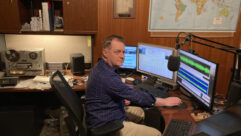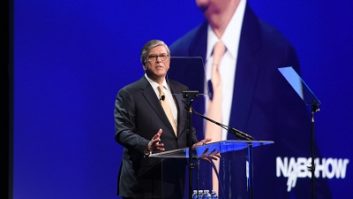An Industry Veteran Wonders If Consumers Will Abandon Analog for Pricier Digital
As the radio industry blithely races toward digital transmission technology, someone has to stop and ask a really simple question: What is the radio audience hearing?
The answer is just as simple as the question. For the next 10 years or so, the bulk of the radio audience is going to be hearing analog transmissions. Heresy? Not at all.
No matter how marvelous digital radio sounds, or how fast IBOC receivers are produced, consumers are simply not going to rush out and buy newer and more expensive digital receivers to replace the perfectly good analog radios they already own. And even when consumers do purchase new radios, many of them will continue to choose the less expensive, more familiar analog products.
We in radio, entranced with our own new technologies, tend to forget that consumers really don’t care that much about audio quality. In most cases they are a lot more interested in their jobs, kids, friends and bank balances than digital radio, HDTV, broadband Internet or any other new technology.
Eventually, these new technologies will probably dominate their respective markets. But the key word here is eventually.
Arbitron doesn’t ask whether listening is via digital or analog receiver. If you poll your listeners, most of them probably won’t know or care to which type of signal they are listening. I suspect that many consumers are not even aware there is such a thing as digital radio.
Unless the FCC establishes a Big Brother-like force of “IBOC Police” to go door-to-door demanding that American citizens give up their analog receivers, the millions of clock, kitchen and car radios in use all over the country will continue to largely outnumber IBOC receivers. Digital may be great, but the radio industry should maintain its analog integrity along with its digital quality.
Money for nothing
Which brings me to my second point.
The IBOC system requires receivers to default to analog whenever the digital signal is deficient. So, even when consumers do shell out their precious hard-earned bucks for a new digital radio, poor digital signals can cause even the IBOC receivers to default to analog.
What will the consumer hear? Something “funny.” They won’t know it’s the signal flipping back and forth between digital and analog. They’ll just know that they’ve spent a lot of money and your station still doesn’t sound right.
Digital car radios are likely to present even more problems. The urban environment will cause signal shifts from building clutter while suburbs frequently suffer from distance issues. No matter the cause, the mobile listener will hear those shifts from digital to analog and back again as disturbances to their listening pattern.
Punch goes the button. And there goes your quarter hour.
Even now, when digital receivers are just beginning to penetrate the vast consumer market, audio quality parity between the analog and digital signals must be made close as possible to minimize the disruptive effects of the default to analog sound.
That’s important enough to repeat: audio quality parity between analog and digital signals is critical, until the far-off day when there are no more analog radios in your listeners’ homes.
Most audio processing manufacturers now offer single packages that process the digital and analog signals concurrently. This helps develop the parity required for IBOC receivers. But every radio station must still maintain the analog signal that it needs to compete in its marketplace on a day-to-day basis. Remember, the analog sound will be the one measured most by ARB in the near future.
The IBOC receiver manufacturers will probably do a good job of matching the audio properties of the analog and digital elements. But the loudness of each element must also be at parity. What if a receiver defaults from digital to analog and the analog is 30 dB louder? Now that’s a great way to screw up quarter-hour performance.
As if that isn’t enough, remember the sound of traditional car radios differs wildly. Speaker systems, distortion, equalization and bandwidth vary by make of car and by class of car in a fleet. Notice the difference between a Delco radio in a Cadillac, and a Delco radio in a Chevy Nova.
And speaking of car radios: there are ugly rumors that some receiver manufacturers may start manufacturing products that present analog default only in mono, or what is optimistically called “blended stereo.” Imagine defaulting from digital to analog when the analog is not only 30 dB louder, but in mono. Pray it isn’t so.
Service first
Here’s the bottom line: Digital’s great, but every radio station’s analog signal will continue to be hugely important in the near future.
Processing digital and analog in tandem may work in some situations, but there are many markets and many stations that will have to treat the signals differently to maintain their existing audience. This means using different processors for each system and treating them independently.
The listener, after all, is our end user – our customer. The listener’s perceptions are what drive our numbers, both in the ratings books and at the bottom line. The listener’s convenience and satisfaction are what make a radio station successful. We get lost sometimes in the airy realms of new technology, and we think everybody else cares as much as we do. But do they? Of course not.
It’s our job to sound good to the listener, no matter what technology or combination of technology is used to receive our signals. It’s as simple as that.







